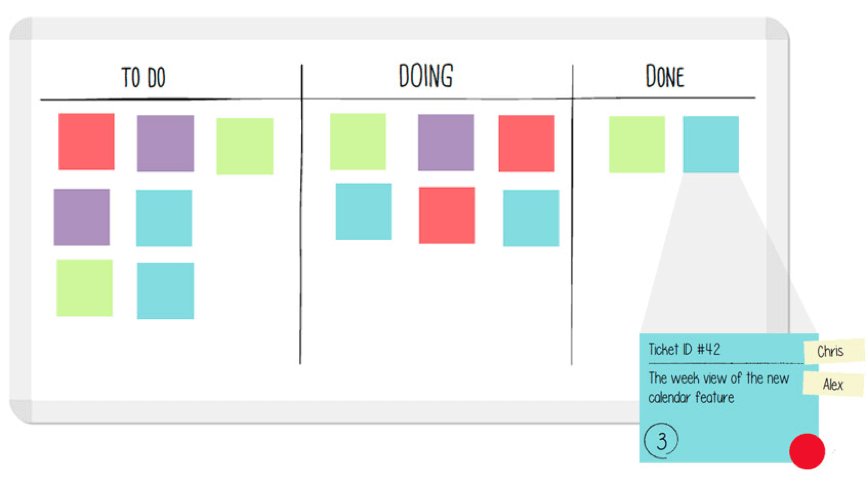Kanban was developed at Toyota by Taiichi Ohno. He was looking for an efficient system for achieving a high level of productivity. Kanban is a visual Lean Tool and is often applied in combination with JIT (Just-In-Time). Components are only produced when they are needed.
Kanban comes from the Japanese words ‘kan’, which means ‘visual’ and ‘ban’, which means ‘card’ or ‘board’. Using a card (or digitally these days), a signal is given when something is needed, for example, when more of certain products or raw materials have to be ordered.
Kanban as production system
Kanban supports the management of a production system as a whole. It is an outstanding way of initiating improvements. Problem areas and bottlenecks are identified as soon as the number of kanban cards in circulation goes down. This implies that the amount of work being carried out is less.
Kanban provides insight into the production process
Kanban can be cast in various forms, one of which is the ‘kanban board’. This is a variation on the kanban cards. On a board Post-It notes, magnets and cards are used to provide an overview of the amount of work and the number of tasks which have to be carried out. Every card represents a product or service in a process and the movement on the board shows the movement in that process. The board is often divided into three columns: ‘waiting for production’, ‘in production’ and ‘produced’.
Another form of Kanban is ‘the Two-Bin system’. The inventory used in production is stored in the first bin. The reserve stock is kept in the second bin. As soon as the first bin is empty, the kanban is taken out of the bin as a sign that it needs refilling. The second bin is moved forward. Once the bin has been refilled, the system is in balance again. As soon as the second bin is empty, refilling begins again with the help of the kanban card which is always in the bin.
Several other types of Kanban are:
- Transport Kanban: a signal to the earlier phase in the process that materials can be taken from the inventory and taken to the next phase. This Kanban includes information like: unique ID, its origin and destination.
- Production Kanban: a signal for production phase they can start manufacturing. It includes information with regard to the processing, necessary materials, unique ID and/or destination of the manufactured product.
- Sales Kanban: similar to the Transport Kanban but is used for external suppliers.
- Signal Kanban: Comprises of the signal production Kanban and the signal material Kanban.
Calculate inventory level – kanban:
There are many methods to calculate the optimum inventory level is. In order to calculate the optimum inventory, certain data is needed. The actual demand/consumption of the relevant (final) product and the variation in the demand/consumption. If these factors are used to ascertain the optimum inventory, Kanban can be applied.
Want to learn more or have a question?
Request our prospectus.

